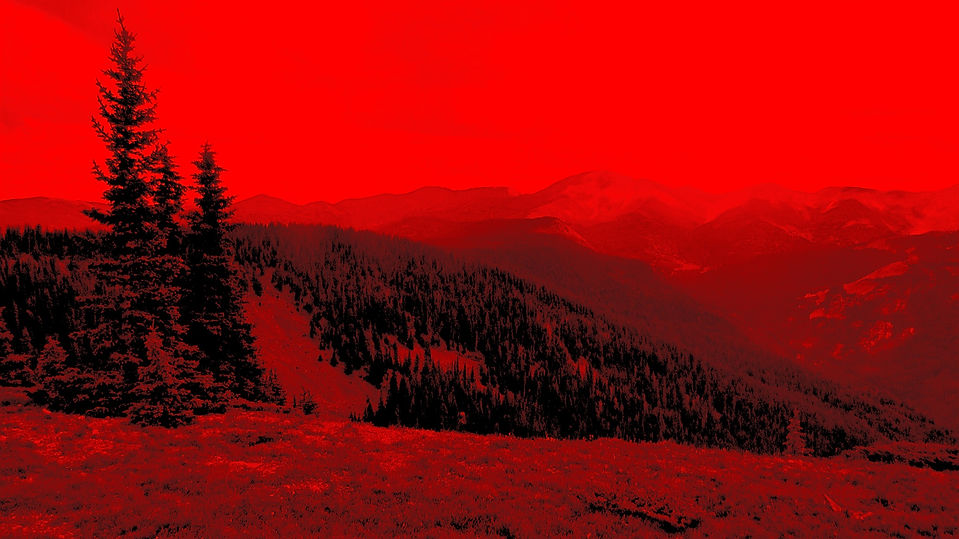
LEGEND OF THE SANGRE DE CRISTO MOUNTAINS EXPLAINED
Exploring the Legend of the Sangre de Cristo Mountains
With its snowcapped peaks and even more spectacular sunsets, the Sangre de Cristo are a ruggedly beautiful chain of mountains that dominate the skylines of the US states of south-central Colorado and north-central New Mexico. According to tradition, “Sangre de Cristo”, which means “Blood of Christ” in Spanish, were the supposed last words uttered by a dying priest. Despite the legend, history suggests the name originated from a much more practical beginning: an expedition.
On November 9th, Catholics worldwide celebrate the first Christian church built in ancient Rome with the Feast of the Dedication of the St. John Lateran Basilica. The church was built in AD 324 during the reign of Emperor Constantine, and is dedicated to “Christ the Savior.”
Archbasilica of St. John Lateran. Rome, Italy.
By Livioandronico2013 - Own work, CC BY-SA 4.0, https://commons.wikimedia.org/w/index.php?curid=39798586
On that date in 1719, explorer Antonio Valverde y Cosío was in or near a mountain pass leading into the land that would later become the San Luis Valley in south-central Colorado. After exploring the lands of present-day eastern Colorado and western Kansas for two months, he was on the last leg of his return trip to Santa Fe. Unfortunately, the last half of his diary is lost, and his exact whereabouts on November 9, 1719 are unknown. (Polt, 2013)
As he had done throughout the expedition, the priest accompanying the party, one Father Pino, most likely conducted Mass and gave the men Communion. In the Catholic faith, Holy Communion is a rite commemorating the Last Supper. Parishioners partake in the rite by eating bread and drinking from a chalice of wine, which according to Catholic doctrine transubstantiate into the actual body and blood of Jesus Christ.
We know for certain that Valverde y Cosío had a penchant for naming their campsites after the feast celebrated on the day his party arrived. On September 29, for example, he named Rio San Miguel (now the Cucharas River) for the Feast of St. Michael. On October 4, he named Rio San Francisco (now Fountain Creek) for the Feast of St. Francis. This was common practice at the time: Rapa Nui, for instance, was named Easter Island when Jacob Roggeveen encountered it on that day in 1722.

Stations of the Cross Shrine. San Luis, Colorado.
We can surmise with some confidence that Valverde y Cosío named the mountain pass “Sangre de Cristo” or “Blood of Christ” in honor of “Christ the Savior,” who according to Catholic doctrine shed his blood on the cross for the salvation of humanity.
Upon arriving at Santa Fe, Valverde y Cosío immediately forwarded his diary to the Viceroy of New Spain, Baltasar de Zúñiga, in Mexico City. The diary was soon archived and largely ignored. Later explorers were left to wonder why Valverde y Cosío named the pass Sangre de Cristo. Without ready access to his firsthand account of the 1719 expedition, they drew on the evidence at hand, to which they added their own speculations.
Last surviving page of Antonio Valverde y Cosío's diary. On October 23, 1719 the party started their return trip to Santa Fe via Rio Napestle (Arkansas River.)
Some cited the alpenglow characteristic of the mountains surrounding the pass. This phenomenon occurs when sunlight reflects off mountain peaks during sunrise and sunset, giving them a reddish color. Some explorers associated this reddening with the color of blood and linked it to the name given the pass by Valverde y Cosío.
As time went on, a legend grew around the alpenglow theory. By the 20th century, this legend was repeated matter-of-factly, as in this account.
"Barbarous Indians” attacked a Spanish expedition party whose members were looking for gold. One of their priests was on a lake in a boat when an arrow pierced his heart, producing a fatal wound. As he lay there dying, he looked up at the mountain and saw its white slopes turn blood-red and would exclaim, “The Blood of Christ!”
(Dawson, 1954)
Alpenglow on the Great Sand Dunes and Mount Herard. San Luis Valley, Colorado
By Great Sand Dunes National Park and Preserve - Alpenglow on Dunes and Mount Herard, PDM-owner, https://commons.wikimedia.org/w/index.php?curid=110707619
When Hispano settlers moved into the San Luis Valley region in the 1850s, this is the story they brought with them. Later, they related the tale to US mapmakers, who drew on it to name the Sangre de Cristo mountains.
Don Antonio may have been simply following the customs of his day when he dubbed his encampment Sangre de Cristo. Nonetheless, he inspired an unforgettably evocative name for a mountain range.
Twitter: abegonzalez1
Works Cited
Dawson, J. Frank. Place Names in Colorado: Why 700 Communities Were So Named, 150 of Spanish Or Indian Origin. J. F. Dawson Publishing Company, 1954. Book. https://babel.hathitrust.org/cgi/ptd=mdp.39015051116740&view=1up&seq=51&skin=2021
Polt, John H. R. “Expedition conducted in 1719 by Antonio Valverde Cossío, governor of New Mexico, to punish the Comanche and Ute Indians.” 14 May 2013. UC Berkeley: Research Center for Romance Studies. Document. https://escholarship.org/uc/item/4gr78391


_edited.jpg)